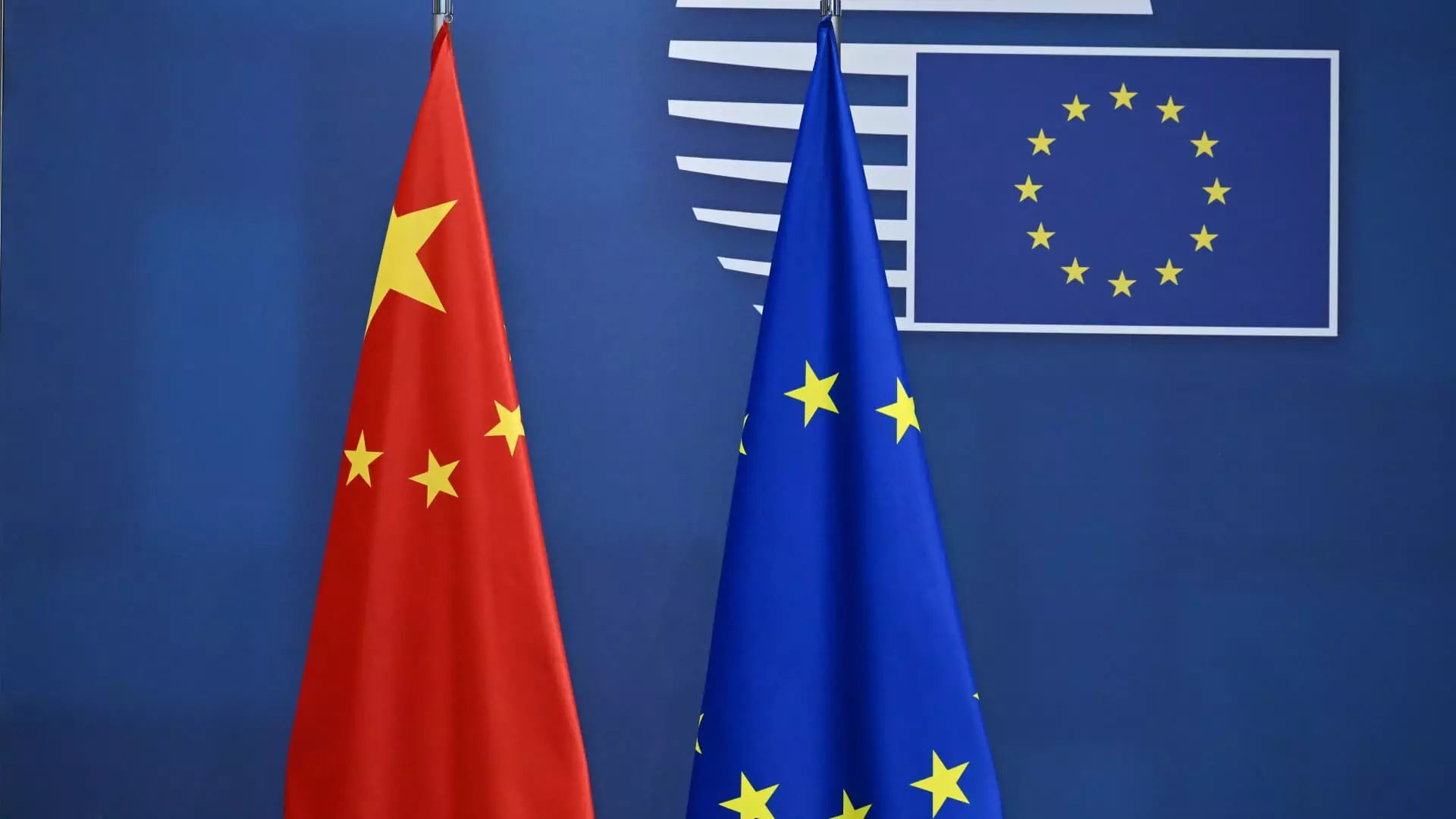Once viewed as promising allies in a rapidly globalizing economy, the European Union and China now stand on the brink of a profound diplomatic and economic breakdown. What was once hailed as an era of mutual opportunity has devolved into an arena characterized by suspicion, tariffs, and strategical discord. The core of this deterioration lies not merely in trade disputes but in a deeper crisis of trust that threatens to undermine the very foundation of their relationship. Recognizing this shift is crucial because it signals a broader contest for influence, one that could reshape the global economic landscape for years to come.
The recent rise in confrontational tactics, including tariffs and import restrictions, demonstrates a significant departure from cooperative engagement. The EU’s restriction on Chinese firms bidding for public health tenders, swiftly countered by China’s import bans on EU medical products, exemplifies a dangerous game of economic tit-for-tat. These measures reveal policymakers on both sides prioritizing short-term protection over long-term collaboration. The result is a spiral of mutual suspicion where diplomatic gestures are replaced by punitive policies, leaving little room for strategic dialogue. Such actions not only threaten economic stability but also erode the political goodwill that once hinted at underlying potential for constructive partnership.
This escalating conflict reflects not just disagreements over trade deficits or market access but a fundamental clash in their economic visions. The EU advocates for safeguarding its industrial sovereignty, emphasizing fair competition and strategic autonomy. Conversely, China is driven by an overcapacity dilemma—an economic engine strained by surplus production yet constrained by global trade tensions. Beijing’s efforts, such as wielding export controls on rare earths, serve to leverage their economic power, but they also explicitly signal a shift towards weaponized trade practices. Such aggressive tactics make clear that the days of benign economic exchanges are waning and are giving way to a more confrontational, geopolitically charged environment.
Power Struggles and Strategic Divergences
The core of the ongoing tensions is a silent but intense battle for global influence. China’s economic trajectory, marked by sluggish growth and excess capacity, has driven it to seek alternative markets and assert dominance through strategic trade measures. Its decision to impose tariffs on French brandy, following EU tariffs on Chinese electric vehicles, exemplifies how trade disputes have become battlegrounds for broader geopolitical leverage. While the EU pushes toward reducing dependence on foreign imports—particularly critical technologies and raw materials—China perceives these efforts as threats to its economic future and retaliates accordingly.
Meanwhile, the United States’ recent tariff regime has added a new layer of complexity, although some analysts argue it could have fostered a moment of unity between the EU and China. Instead, Beijing’s perception of having “won” the trade war with Washington diminishes its incentive to seek rapprochement elsewhere. By viewing the US tariffs as a relative victory, China feels emboldened to assert itself more aggressively on the global stage, often at Europe’s expense. The EU’s attempts to bolster strategic autonomy, particularly through measures enhancing digital and technological independence, appear increasingly at odds with China’s approach. This fundamental divergence underscores a broader contest of expanding spheres of influence—one that risks nuclear-style escalation if left unchecked.
It is instructive to observe how these conflicts extend beyond tariffs and into the realm of raw materials. Rare earths, vital for modern industries such as electric vehicles and defense systems, have become an arena for geopolitical struggle. China’s export restrictions on these critical resources serve as a double-edged sword: protecting its own industries while exercising coercive power over other economies. This tactic signals a future where resource control becomes a primary form of leverage, heightening tensions and exposing the vulnerabilities of Western industries increasingly dependent on Chinese supplies.
The European Union’s response—ramping up protective measures—further inscribes a cycle of retaliation and mistrust. Frustration around China’s opaque business environment and aggressive trade tactics fuels an arms race of safeguard policies. Summit negotiations, such as the upcoming EU-China summit widely anticipated in Beijing, are unlikely to produce breakthroughs. Instead, they reveal the growing divide, with officials preparing for difficult, potentially inconclusive dialogues. The political climate suggests that both sides see diplomacy as a constrained space for real compromise, instead operating within strategic frameworks designed to safeguard core interests.
The Future: Turbulence or Transformation?
The trajectory of EU-China relations at this juncture is one of turbulence over transformation. While some still cling to the hope that diplomacy can mitigate hostilities, an honest inspection suggests that deeper, structural shifts are inevitable. The EU’s recent hardening of policies signals an intent to resist China’s assertive trade tactics, but it also risks further alienating Beijing. Conversely, China perceives the EU’s efforts as attempts at containment, fostering a defensive posture that only intensifies the cycle of confrontation.
It is undeniable that the emerging phase of global economic competition is rooted in power, sovereignty, and strategic self-interest. The EU’s push for digital and industrial autonomy is a clear sign that it views dependence on China as a fundamental vulnerability. Yet, at the same time, China’s willingness to use trade as a weapon demonstrates its desire to shape the rules of the game to favor its own rise. Neither side seems willing to accept the other’s vision without significant concessions, and both are increasingly entrenched in their positions.
This stands in stark contrast to the center-wing liberal perspective, which champions fair and balanced trade as a means of fostering sustainable growth and diplomatic stability. The current paradigm, however, appears to be drifting toward a zero-sum game where economic strategies are infused with geopolitical ambitions. Without a concerted effort to reframe their relationship—through dialogue, mutual understanding, and strategic compromise—the risk of a prolonged, possibly irreversible, decline in EU-China ties remains high. The coming months may determine whether diplomacy still holds sway or if this struggle for influence marks a new, more dangerous chapter in international relations.

